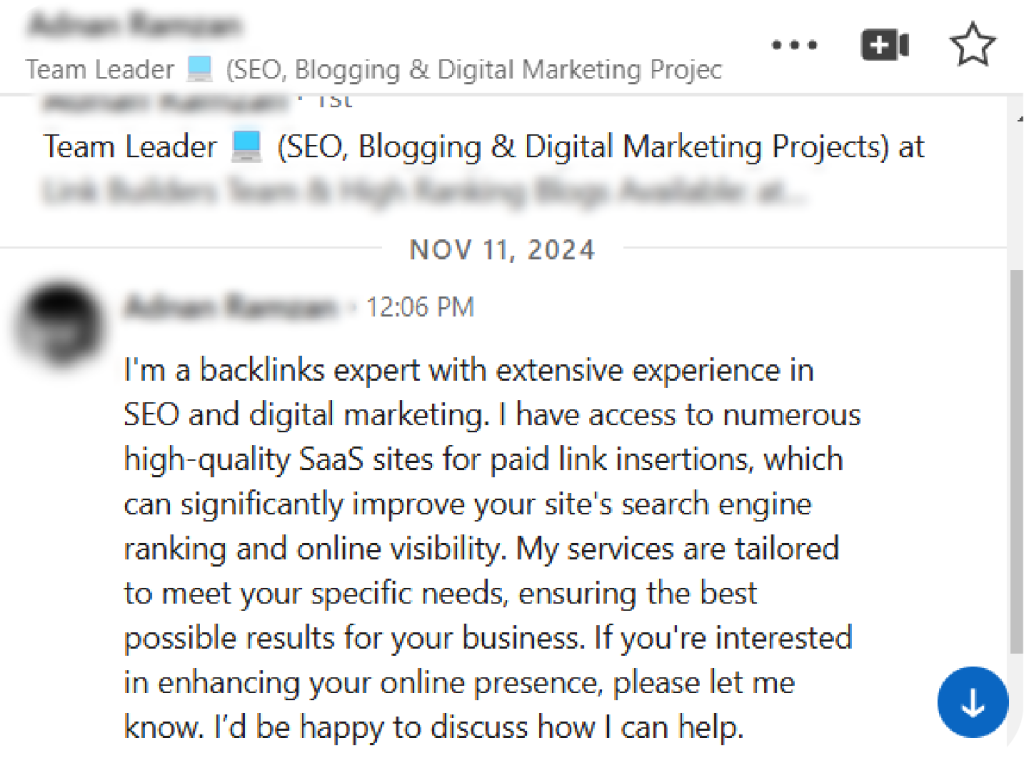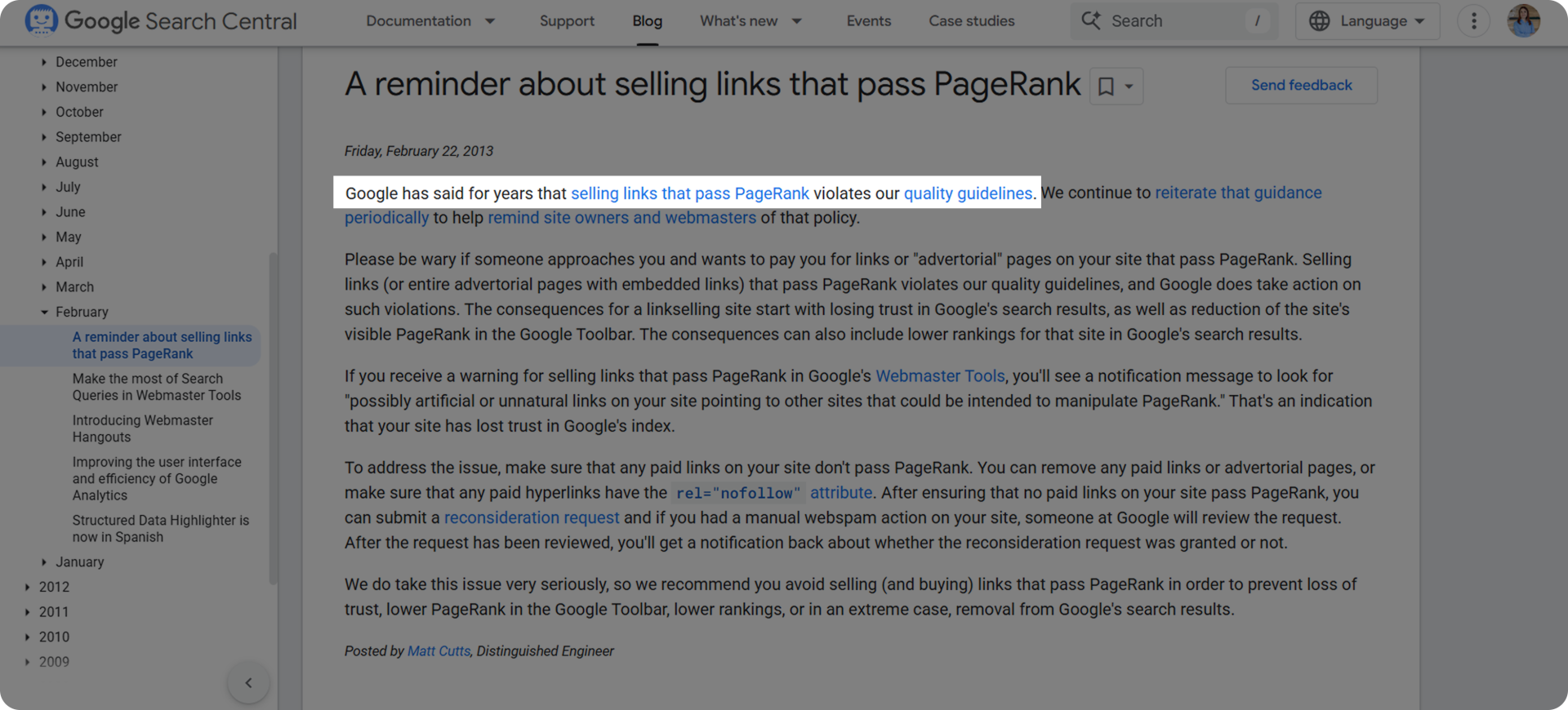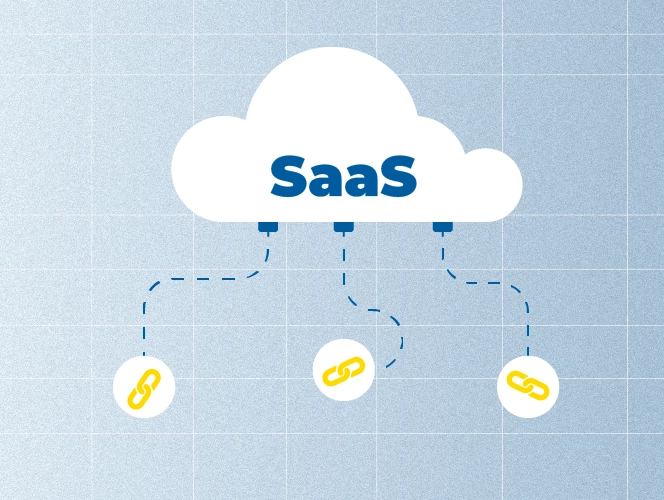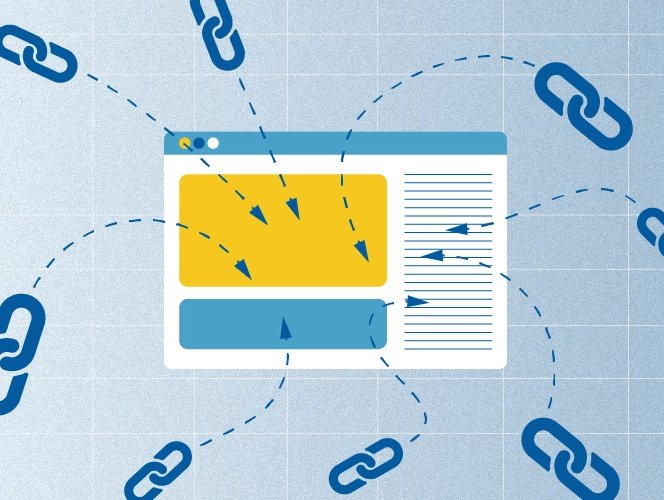If you are here, then you probably need SaaS backlinks, right? Or, perhaps you want to know if link building is worth the effort, time, and money.
Either way, you’re in the right place.
In this guide, we’ll break down what makes SaaS link building so valuable, share real results from our clients, and smart strategies you can use to grow your brand sustainably, as well as tactics to avoid.
And if you make it to the end, there’s a little bonus waiting for you: a competitor backlink analysis checklist.
(Or you can scroll down now)
But if you do, you’ll lose all the real examples and small case studies we have for you.
So, buckle up and let’s start!
What is SaaS Link Building?
When you hear “link building” and “SaaS link building,” it might seem like two completely different concepts.
Here’s the truth.
SaaS link building is simply a niche within link building. The key difference? SaaS link building focuses on getting backlinks from SaaS (Software as a Service) websites. These are legitimate businesses offering a certain type of software or a tool (e.g., time tracking software).
On the other hand, link building refers to building backlinks from different types of websites.
With that cleared up, let’s understand what is so special about SaaS backlinks.
What Makes SaaS Backlinks Worth It?
Now, you might ask, “Why would I need backlinks from SaaS websites if I can simply get random backlinks from any website? To make it easier, here’s a quick breakdown of the main benefits of SaaS backlinks.
- SaaS backlinks come from legitimate websites that represent real businesses. These companies care about their site maintenance. Along with their website growth, your backlink value also grows over time. So, including link building as part of your small business plan is a smart move, keeping your business visible and bringing in steady traffic over time.
- Since SaaS backlinks come from real business websites, they bring more authority and make your website look more trustworthy in the eyes of search engines. Imagine getting a link from HubSpot. It’d definitely be a strong signal to Google that your site is a reliable source of information.
- Since these backlinks come from reputable and trusted sources, your DR and traffic significantly improve.
- SaaS backlinks come with another added value, which is brand credibility. The more people discover you through other SaaS websites, the more recognition your brand gains over time.
Note: While SaaS backlinks are more valuable, it makes sense, in some cases, to build backlinks from only-content sites. These are websites created primarily to provide content to users.
You can consider this option if your niche is too specific. For example, if you have software for automated email marketing for real estate agents, you can benefit from backlinks on blogs that focus on email marketing for real estate professionals.
We’ve got the basics, now it’s time to explore some of the best SaaS link building strategies we practice and recommend.
4 SaaS Link Building Strategies That Work
A-B-C Link Exchange
A-B-C link exchange is a link building strategy where three or more websites link to each other.
Here’s how it works:
Website A links to Website B, Website B links to Website C, and finally, Website C links to Website A.
Unlike direct exchanges, the A-B-C approach is generally safer. To understand the why, you’ll need to learn how Google’s crawlers work.
They simply follow the path you’ve created. In other words, if you’ve built backlinks with the help of two partners (which is the 3-way exchange), crawlers go from A to B to C and don’t notice anything suspicious.
However, in the case of direct exchanges, they go from A to B and vice versa, which doesn’t look very natural to them. Moreover, it can lead to penalties and the disappearance of your website from search results.
The bottom line? A-B-C exchanges should be your go-to strategy for backlinks, but pay attention to these websites’ SEO metrics to ensure backlinks come from trusted sources. That’s the main strategy we use when doing link building for SaaS companies. We only use a white hat approach to get your backlinks. No spam. Only non-shitty backlinks.
Here’s what we prioritize when it comes to link exchanges:
- Building dofollow backlinks from legit SaaS/agency websites with DR 50+ and Traffic 1000+,
- Getting unique backlinks: one link per domain.
- Doing natural and contextual link insertions,
- Optimizing anchor texts by making them more descriptive and relevant to the surrounding context.
If you need more tips and tricks on link insertions, we’ve got a complete guide.
And, if you want to save time and resources, you can outsource link building to us. We already have a huge network of partners and have automated systems allowing us to deliver your backlinks.
What’s even cooler is that we have a sweet backlink pricing, which allows you to get backlinks without breaking the bank. If you don’t want a subscription yet, no pressure. We also offer a test run, which means you can try it out, see the results for yourself, and only commit if you’re happy with what you get.
Guest Posting
Guest posting is a link building strategy where you write and publish an article on another website or blog.
It helps you:
- Build authority,
- Attract qualified traffic,
- Improve brand awareness,
- Gain a relevant backlink to your blog or product page.
Despite all these advantages, guest posting can be a bit of a long game. It involves reaching out to industry blogs or websites, suggesting guest post topics, and creating valuable content that aligns with their audience.
While it’s mostly a beneficial strategy, there are some challenges you may face.
- It takes time: Finding relevant websites, reaching out, and writing brand-new content are time-consuming.
- Long publishing timeline: It may take longer than expected for websites to respond or publish your guest post.
- Scaling is challenging: It’s quite difficult to find legit and relevant websites to contribute to.
- Results aren’t guaranteed: You may send out a bunch of emails and only hear back from a few of them. So, you can’t estimate how many guest posts may go live for a specific timeframe.
Do we recommend this approach? Yes. Is it challenging? Yes. Should I try it out? For sure, since guest posting opens doors to new readers, fresh connections, and backlinks that matter.
Brand Mentions
Brand mentions are cases when a company’s, product’s, or service’s name is mentioned online, including articles, reviews, social media, and other digital platforms.
Brand mention is a backlink too, but with extra value: brand credibility and awareness. The more people know your business, the more they and search engines trust your brand.
Especially now, with AI increasingly shaping search results, it’s a must for companies to stand out in LLMs like ChatGPT, Gemini, and Perplexity.
The good news is that our brand mention services can help your business gain the recognition it deserves.
Sounds interesting? Check out our brand mention packages and a custom plan for anyone looking for a more personalized approach.
SaaS Link Building: 3 Tactics to Avoid
Too good to be true? That’s the perfect way to describe certain link building strategies. They look easy at first sight, but the damage they cause outweighs all the short-term benefits.
Here are three you should avoid.
Link selling websites
Link selling websites, as the name suggests, are websites that sell backlinks.
If you’ve come across messages like this on LinkedIn or another platform, you already know that these link insertions are paid, and the quality of the backlinks leaves much to be desired.

While paid backlinks may seem an easy and cheap way to improve SEO, what they actually do is:
- Harming your site’s credibility.
- Giving a quick boost, and then a significant drop after some time.
- Getting your website penalized by Google. This can lead to lower rankings or removal from search results altogether.

So, we recommend you avoid buying links. They mostly come from spammy sources and can do more harm than good.
Direct exchanges
A direct SaaS link building strategy is like a contract between two companies to give and receive backlinks.
Here’s why we generally avoid this method.
In a direct exchange, Website A (a blog about marketing tools) links to your SaaS product Website B (a tool for email automation).
In return, you would link back to Website A from your website. Sounds simple, right? It’s like the “Add my link, and I’ll add yours” way.
However, Google’s algorithms are pretty smart these days. If it notices too many direct exchanges between websites, it can flag them as manipulative, potentially harming your SEO ranking. That’s why it’s crucial to know how to check Google rankings regularly to track the impact of your backlink strategy.
That’s why we tend to focus on safer and white-hat strategies like A-B-C exchanges.
Comment/Forum Backlinks
We can’t emphasize this enough: comment and forum backlinks just don’t work anymore.
In fact, they’re often seen as spammy and can even lead to Google penalties, as they violate Google’s guidelines.
Here’s what Google says.

If you want to know which types of backlinks are worth chasing and which ones should be avoided, check out our complete guide.
SaaS Link Building Case Studies
Ok, we’ve reached the best part։ seeing what actually happened when our clients chose to work with us.
While they did their part too, improving their content and keeping their website in good shape, without backlinks, it would be impossible to see real results.
After all, SEO works well when on-page, off-page, and technical aspects are optimized.
Let’s take a quick look at each case study, and we’ve included links so you can check out their full stories if you want.
Case study #1 EasyDMARC
Key results:
- Domain Rating: 70 → 78
- Organic Traffic: 15K → 74K
- Backlinks from 1100+ unique domains
- Timeframe: 3 years
How we did it:
We created a strategy around their goals, focused on the right pages and anchor texts, and consistently built valuable backlinks every month.
Case study #2 SuperAnnotate
Key Results
- Domain Rating: 39 → 72
- Organic Traffic: 4K → 44K
- Backlinks from 650+ unique domains
- Timeframe: 3 years
How we did it
We delivered relevant backlinks every month, which helped boost rankings, improve visibility, and grow their organic traffic at scale.
And that’s just the beginning. We’ve helped many other SaaS companies achieve similar growth. Check out the rest of our case studies to see more success stories.
Seeing how EasyDMARC and SuperAnnotate grew their traffic and authority is inspiring, but it’s even better when you take action for your own SaaS company. Before you start building links, it’s smart to understand what your competitors are doing.
That’s why we created a competitor backlink analysis checklist.
It helps you:
- Identify the highest-value backlinks your competitors have
- Spot patterns in their link building strategies
- Prioritize opportunities that will help your own authority and traffic
By using this checklist, you move from learning what works to applying it strategically, so you can start building backlinks with confidence instead of guessing.
Ready to Grow? SayNine Can Help
You’ve seen which SaaS link building strategies work, which don’t, real examples, and even got a checklist to guide your next moves.
Now, it’s time to put these insights into action, whether that means doing it all yourself, which can be very difficult without the right strategy and connections, or letting us at SayNine help you build non-shitty backlinks that improve rankings.
If something just clicked and you’re thinking, “Yeah, I need this,” contact us. We’re here to help.
FAQ about SaaS link building
Does link building still work?
Yes, link building still works. Relevant backlinks, coupled with strong content and website performance, can push your rankings.
How to build 100 backlinks in 30 days or less?
It’s possible to build 100 backlinks in 30 days thanks to automated processes. However, If you can’t maintain quality and quantity long-term, it’s better not to aim for 100 backlinks each month, as it’s not a sustainable strategy.
How to do SaaS link building?
To do SaaS link building, try strategies like A-B-C link exchanges or guest posting to build relevant and good backlinks.





